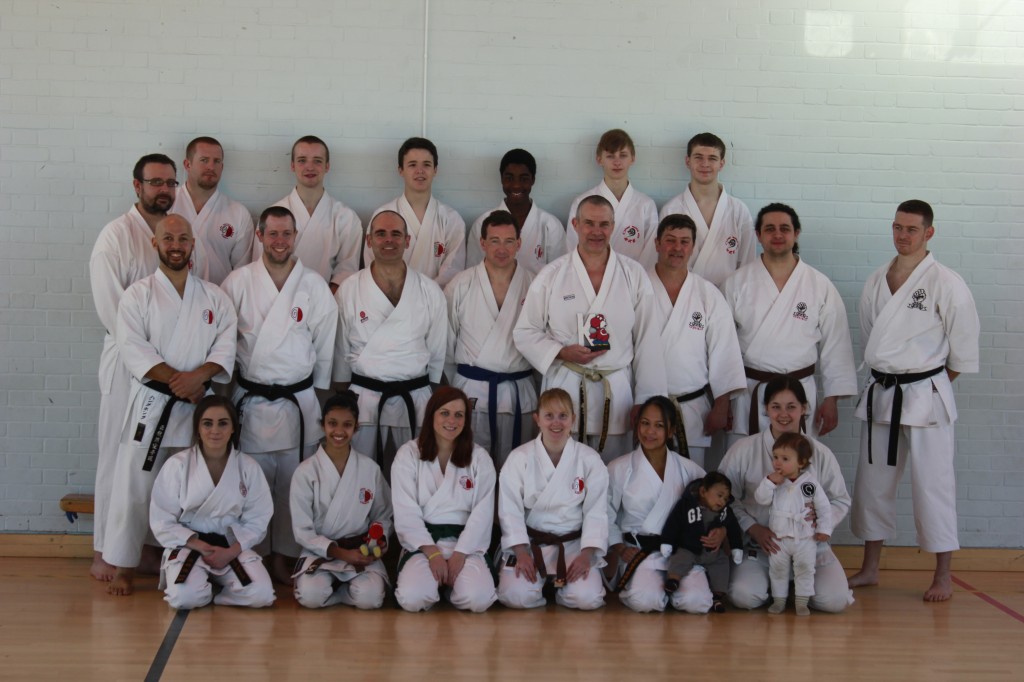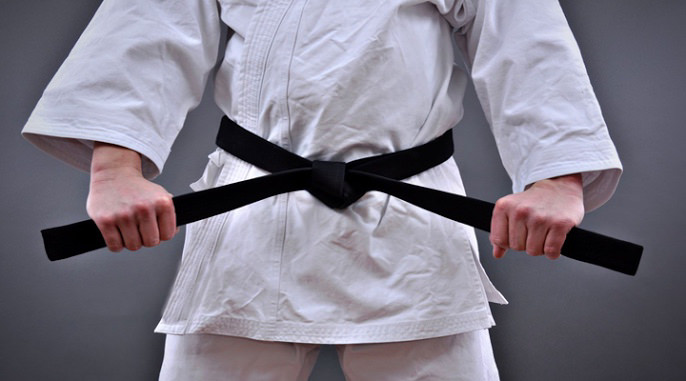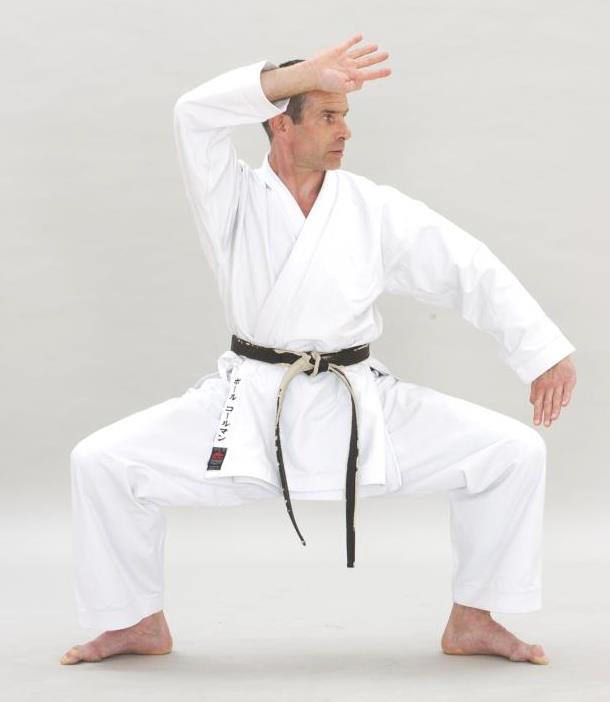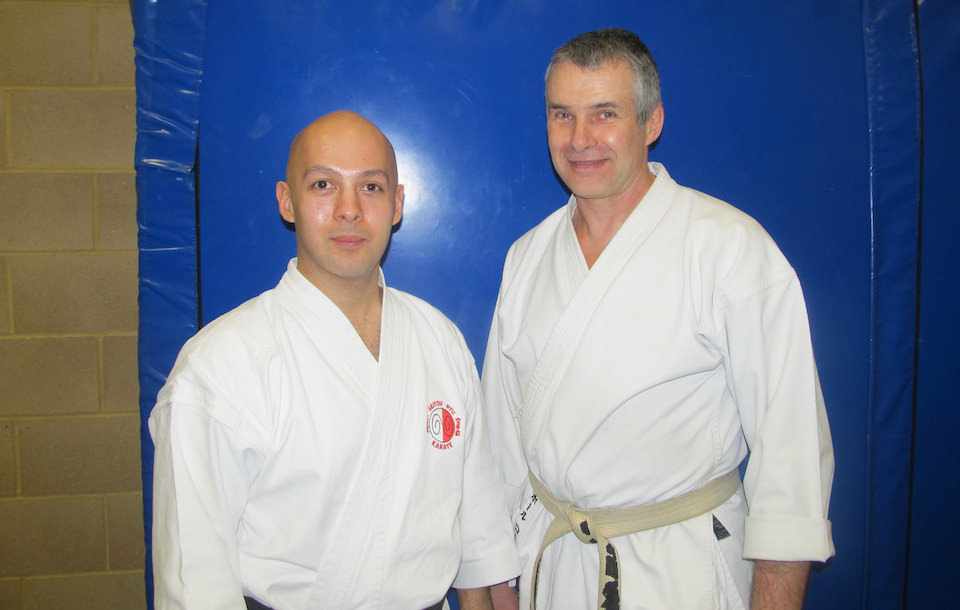On Sunday 3rd March, our club had the pleasure of hosting a seminar with Shihan Paul Coleman, 7th Dan JKF Goju Kai/Seiwakai at William Edwards School in Grays, Essex.
This year we split the day into 3 sessions to make the training even more suitable for the variety of students and their skill levels.

The morning session was packed full of fun and exciting training drills for the juniors. Paul Shihan took them through some short burst activities that got them warmed up very quickly but still with plenty of energy for the rest of the class. During the kihon (basics) part of the seminar he taught some important points for making sure the juniors were all performing their techniques correctly, which they all picked up reasonably well. What I have always liked about the way he teaches is that he doesn’t just tell the students what should be doing, but why they should be doing it that way too, as well as throwing in some great analogies so that the methods become easier to understand, which in my opinion is particularly important for juniors, especially at the lower grades.

The midday session was open to teenagers and adults of all grades, mostly consisting of intermediate kyu grades as well as a number of brown and black belts, there were several non-club members who were also in attendance. The session had more of a focus on kata, which for those who find kata a little boring had their brains tested when Paul Shihan introduced a variety of ways to train our kata! Even the simplest of kata were put to the test by doing something as easy as starting facing the corner instead of a wall. Brown and black belts were left scratching their heads trying to get to grips with kata they thought they once knew, much to the amusement of the rest of the class. I’m sure that a lot of the instructors who were there on the day have since introduced this method of kata practice to their students! As the session drew to a close, for a last little bit of fun, Paul Shihan took the group through the kata Suparinpei, the longest kata in the Goju Ryu system. Kudos to the lower grades who managed to follow along, particularly Simon Anstead from Wickford dojo, the only white belt there on the day.

During the break between the middle and final sessions, we presented a small gift to Paul Shihan, hand made by Samuel Parker Sempai from Grays dojo. Knowing how much Paul Shihan likes a good joke, we thought he would like the pun within the gift, combining our club mascot (Yoshi), his teaching title and the WKF’s “K is on the way” campaign.
In the final session the focus was on conditioning, Goju kumite and higher level kata. The first part, Paul Shihan took the group through even more new and interesting ways to build up the students conditioning, coordination and fitness. Students who thought they were strong and fit were put to the test with some demanding exercises which required both them and their training partners to work together equally. If one slacked off, the other would suffer in one way or another. Usually this meant that the other person would fall in a heap on top of their partner, much to the amusement of others around them. One of my favourite parts was the technical drills to use in Goju kumite, which in my opinion has a more practical element over sport kumite and more realistic because of the closer ranges you work within. I’m glad that I took my camera with me that day as there was so much information that I wouldn’t have been able to write it all down afterwards. It’s so easy to forget, even just a short few hours after the seminar what was covered. I’ll be looking over these points over the coming weeks and will surely return to it for more over the continuing months as well.
 When we moved on to kata, we continued to study Suparinpei, repeating some of the points from the previous session but then starting to go through more detail on footwork, relaxation points, muchimi (heavy/sticky feeling) and using our hara (centre) correctly. Once again, Paul Shihan’s style of teaching made it very easy to pick up the points he was making, whether it was just the specific words he used or the analogies he made, everyone in the group seemed to get a good understanding of the key points in the kata. How long we all remember them is down to us of course, as Paul Shihan reminded us to continue our practice in our respective dojos once we had left the session, something I have made sure I have done in my own time as well as whilst teaching my own classes.
When we moved on to kata, we continued to study Suparinpei, repeating some of the points from the previous session but then starting to go through more detail on footwork, relaxation points, muchimi (heavy/sticky feeling) and using our hara (centre) correctly. Once again, Paul Shihan’s style of teaching made it very easy to pick up the points he was making, whether it was just the specific words he used or the analogies he made, everyone in the group seemed to get a good understanding of the key points in the kata. How long we all remember them is down to us of course, as Paul Shihan reminded us to continue our practice in our respective dojos once we had left the session, something I have made sure I have done in my own time as well as whilst teaching my own classes.
Whilst this was only our second time hosting a seminar with him at our club, it’s always a pleasure to train with a great instructor like Paul Shihan and get to soak up all the information he has to offer, as well as exposing the SRK students to the abundance of knowledge and experience that is out there. Thank you to all of the karateka from other clubs who also came along to support the seminar!
From all of us at SRK,
Domo arigato gozaimashita Paul Shihan



